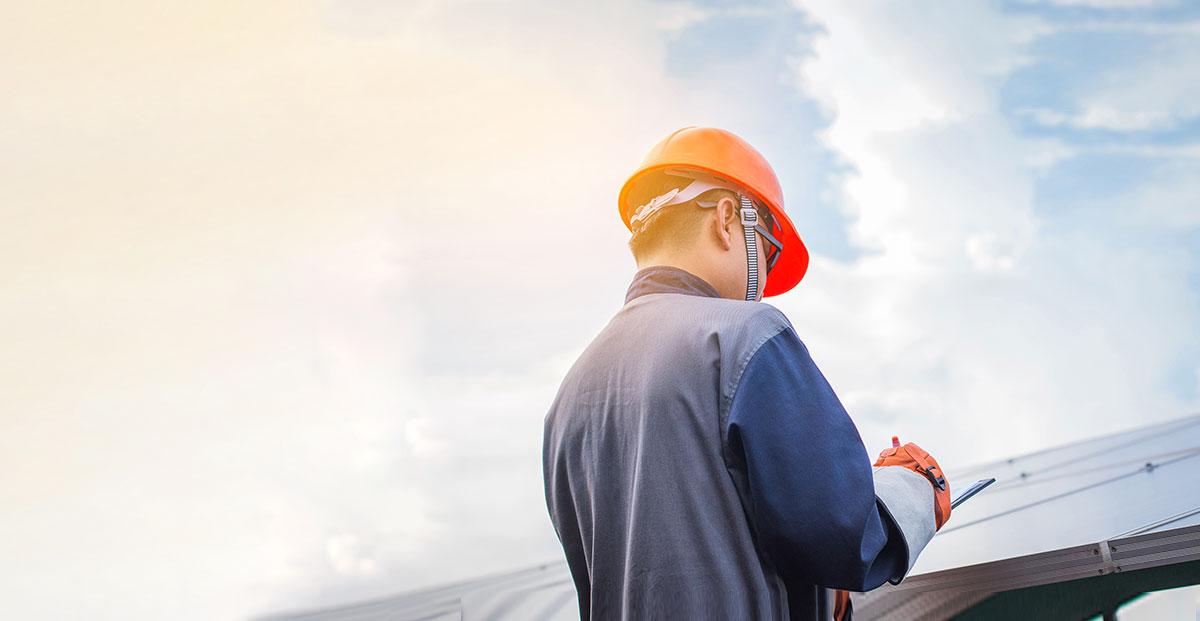Flat commercial roofs don’t have the ability to naturally drain rain, snow, and precipitation the way that sloped roofs do. Therefore, having a durable roof membrane is essential in protecting the building from leaks and other damage that can occur. Protecting this roof membrane should be a priority to ensure the continued longevity of your building’s comfort as well as its materials. How can facility managers protect the most important part of their roofs?
What Are the Most Common Causes of Roof Punctures?
Roof membranes are designed to take a lot of abuse—but a lot of the abuse they take is passive. These materials are designed to resist long years of UV exposure and heat damage. Some roof membranes are designed to stand up to physical abuse as well, but these are typically more expensive. Many roofing contractors recommend installing these membranes only around the roof perimeter, where they’re most likely to encounter physical stresses. This means that the rest of your rooftop remains vulnerable.
Foot traffic is the first most common cause of roof punctures. Even though facility managers typically provide some form of clearly marked pathway for maintenance workers, such as cover boards with non-slip surfaces, there’s no guarantee that lax personnel won’t stray off the path. Roof membranes aren’t designed to stand up to repeated foot traffic, and heavy steel-toed boots can easily pierce fragile membranes.
Weather can also cause membrane punctures. While most roof membranes are designed to shed water, hail can often present difficulties. If your membrane isn’t designed to resist uplift forces, then strong winds can also present a risk. Even if the wind itself doesn’t damage your roof membrane, it can carry windblown debris. A tree branch falling on your roof can create dozens of punctures.
Lastly, wild animals can cause membrane punctures. That’s right—your roof can host an entire ecosystem without your knowledge. Birds, squirrels, and possums all try to nest and burrow in commercial roofs—and if a roof membrane can’t survive contact with a heavy boot, it’s certainly not designed to resist sharp little claws.
How to Keep Your Roof Membrane Safe from Punctures
Let’s start at the beginning—you should always train your workers to stay on the safely marked paths on top of your roof. Cover boards might not be enough to stop them. Roof access walkways—which are elevated from the roof surface and have guardrails—are a much more authoritative way of corralling your employees and maintenance contractors.
In addition, keeping a detailed visitor log helps create a system of accountability—anyone who goes against your rooftop safety plan should be identifiable and should have to go through additional training before heading back out. What’s more, you should be able to time your maintenance cycles so that you can inspect the roof every time a certain number of people have walked on it.
Protecting your roof from weather events can be harder, but not impossible. First, you should always inspect your roof after an extreme weather event that involves hail or heavy winds. Maintenance workers should identify windblown debris, pooling water, and any areas where hail may have caused a puncture. Debris should be removed, punctures should be repaired, and any spots with pooling water should be assessed to understand whether you need more drainage.
Second, you should make sure to regularly trim foliage near your roof. If you have nearby trees that are taller than your roof, you may want to consider removing them—or at least regularly trimming branches that can threaten your roof surface. Meanwhile, trees, bushes, and foliage near your roof and walls can act as highways for pests. Trim back these areas to keep animals from colonizing your roof surface.
Lastly, rooftop support structures are critical when it comes to protecting your roof membrane. Placing your equipment, walkways, and pipes on supports with ballasted, non-penetrating fasteners means that their weight gets spread out across a larger surface area. This in turns means that it’s much less likely that heavy equipment will crush or tear through your roof membrane.
At PHP Systems/Design, we create durable, safe, and long-lasting rooftop support systems that can help your roof membrane survive for its entire operational life. Investing in a sound system is a wise decision that will protect your workers, your equipment, and your building.




